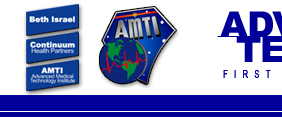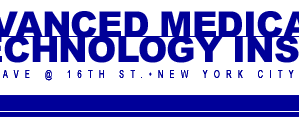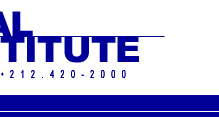










|
>NEW & NOTEWORTHY : Back to Public Relations Archives Future of medicine: Multimedia lets surgeons help anywhere in world Daily News, City
Beat, July 22, 2002 BEAM ME UP: A "Star Trek" fan, Dr. James Rosser and his colleagues are refining a 5-pound diagnostic computer they have dubbed a "Tricorder" - after a tool used on the television show. Dr. James "Butch" Rosser has seen the future of medicine. It's television. Rosser, 48, is convinced that TV, in conjunction with computers, satellite phones and innovative surgical techniques, will change the face of medicine. "To use the young-folk parlance, "It's all about the Benjamins,"" Rosser said with one of his frequent laughs. "It's good medicine, and it's going to save everyone a whole lot of money." He must be on to something. Rosser's work has been featured on six documentaries shown on cable TV's Discovery Channel and TLC. He has been the subject of reports on Cable News Network and "The CBS Morning News." He has also been written about in numerous newspapers, magazines and medical journals. A former assistant professor of surgery at Yale University Hospital and now head of the Advanced Medical Technology Institute in the Department of Surgery at Beth Israel Medical Center on Manhattan's East Side, Rosser is an internationally recognized authority on laparoscopic surgery. Instead of cutting a large hole in a patient to reach the affected organ, laparoscopic surgeons make four half-inch-long openings around the area where they need to work. Long, chopstick-like instruments with clamps, cutting tools and tiny video cameras on each end are then inserted into the openings. Watching a television monitor, doctors use the tools to repair or remove the ailing organ. Rosser said the technique is catching on, although fewer than 15% of surgeons nationwide are qualified to use it. "Patients recover faster because the technique is less invasive," said Rosser, who has been using laparoscopic techniques - and training other physicians how to use them - for more than a decade. "The quicker a patient recovers, the faster he can get back to work." Rosser, a former college football player from Mississippi has had laparoscopic surgery himself. When his weight topped 400 pounds, Rosser underwent a procedure, led by a colleague he had trained in the technique, to reduce his stomach and small intestine. He has dropped 125 pounds in the last 10 months. Rosser holds patents on several tools used in laparoscopic surgery and has won three Smithsonian Awards in four years for equipment he designed. He thinks combining laparoscopic surgery with computers and satellite dishes will revolutionize medicine by making expert advice and advanced surgical techniques available in even the most remote sections of the world. This is telemedicine. By equipping a doctor or trained technician with laparoscopic tools, a satellite dish, a telephone and computers, a surgeon sitting at a computer in New York can oversee an operation being performed anywhere in the world. Rosser has done just that. Sitting at home in North Guilford, CT, he has acted as a consultant to doctors performing surgery in the Dominican Republic. With the same images on his computer screen as the doctors saw in the operating room, Rosser was able to help guide the surgeons through a complicated gastroesophageal procedure. He was also the consulting surgeon for "Operation Rainforest," in which a doctor and several technicians were able to perform laparoscopic surgeries in the far reaches of the Amazon Jungle, again through satellite hookups with Rosser in the States. Rosser has also created a CD-ROM set, "Yale Series on Minimally Invasive Surgery," that has been used to teach other surgeons laparoscopic techniques he developed. "This is all incredibly exciting," said the Civil War history buff and "Star Trek" fan. "I come to work smiling every day because I'm pumped. How do you predict the future?" he said. "You create it." |
s |
|
|||
 |
 |
 |
||||||||
 |
|
|
|
|
|
|
||||
 |
 |
 |
||||||||
 |
 |
 |
 |
|||||||
|
|
|
|
|
|
|
|
|
|
|
|